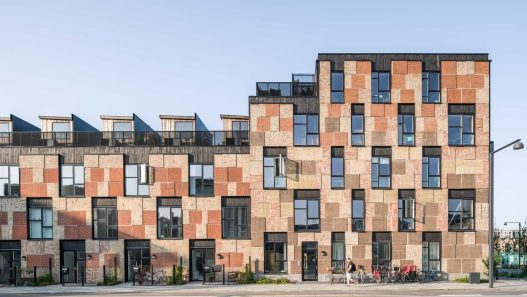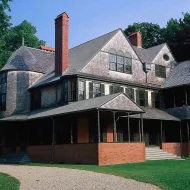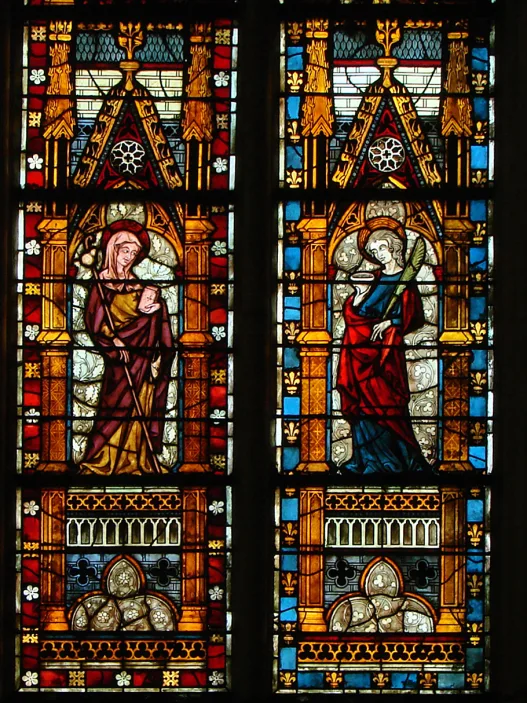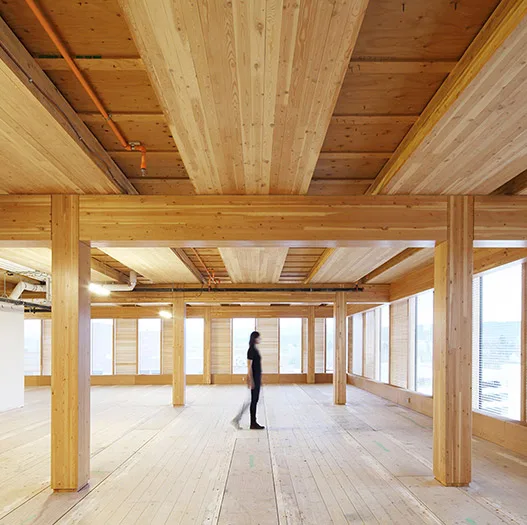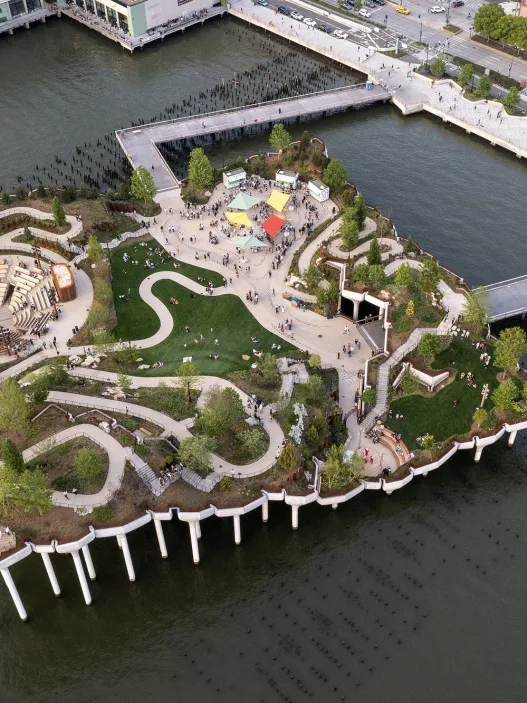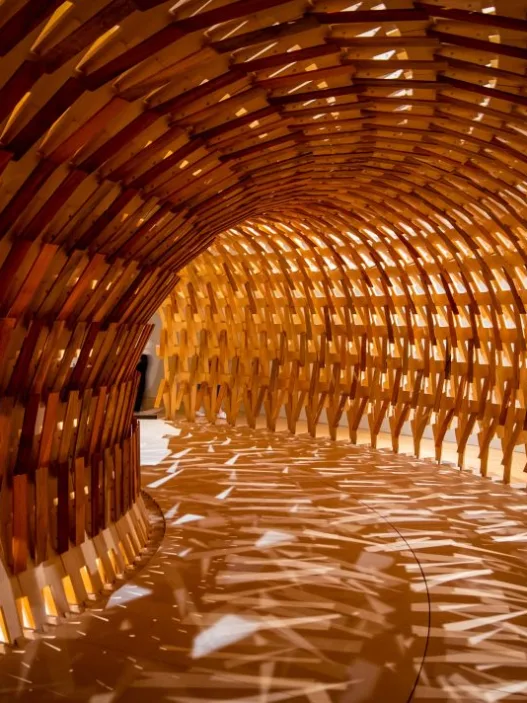A magnificent and durable natural stone, granite has played an important role in architecture for centuries. Known for its durability, aesthetic appeal and versatility, granite has been used in everything from ancient monuments to contemporary buildings.

Description of Granite: Composition and Geologic Formation
Granite is an igneous rock composed mainly of three minerals: quartz, feldspar and mica. This unique combination gives granite its characteristic mottled appearance and a range of colors, from dark grays and blacks to vibrant pinks and whites. The formation of granite takes place deep in the Earth’s crust, where magma cools slowly over millions of years. This slow cooling process allows large crystals to form, resulting in the coarse-grained texture that is the hallmark of granite.
The geological formation of granite is a fascinating process that reflects the dynamic nature of our planet. As tectonic plates shift and volcanic activity occurs, magma is pushed towards the surface and eventually solidifies into granite. Over time, erosion and weathering expose these granite formations, making them accessible for quarrying and use in construction.
Granite’s durability is one of its most attractive features. It is highly scratch, heat and weather resistant, making it an ideal choice for both interior and exterior applications. This durability not only enhances its aesthetic appeal, but also ensures that structures made of granite can withstand the test of time.
Historical Context: Use of Granite in Ancient Civilizations
Granite has a rich history dating back to ancient civilizations. The Egyptians, for example, used granite extensively in the construction of their monumental structures, including temples and pyramids. The Great Pyramid of Giza, one of the Seven Wonders of the Ancient World, features granite blocks quarried and transported from remote locations, demonstrating the importance of stone in ancient Egyptian architecture.
In ancient Rome, granite was also favored for its strength and durability. Recognizing its ability to withstand heavy loads and harsh weather conditions, the Romans used granite to construct roads, bridges and public buildings. The Pantheon, with its grand portico of granite columns, is a testament to the stone’s enduring legacy in monumental architecture.
The historical significance of granite extends beyond these ancient civilizations, as it has been used in various cultures around the world. From the temples of Angkor Wat in Cambodia to the cathedrals of Europe, granite has been the material of choice for creating structures that reflect the values and aspirations of societies throughout history.
Cultural Significance: Granite as a Symbol of Permanence and Power
Granite has a deep cultural significance, often symbolizing permanence, strength and resilience. Its durability and timeless beauty have made it the material of choice for monuments, memorials and public buildings. In many cultures, granite is associated with stability and durability, qualities highly valued in architectural design.
For example, granite is often used in war memorials and monuments to honor those who have served and sacrificed for their country. The solid and unyielding nature of granite serves as an appropriate tribute, evoking feelings of respect and reverence. The Vietnam Veterans Memorial in Washington, D.C., made of black granite, is a striking example of how this material can carry deep emotional meaning.
In addition to its symbolic meanings, granite’s aesthetic qualities also contribute to its cultural significance. Natural variations in color and texture allow for unique designs that can reflect a community’s identity and heritage. For this reason, granite is often used in public buildings, parks and public spaces, enriching the cultural landscape and creating a sense of place.
Understanding the Relationship between Granite and Monumental Architecture
Granite’s relationship with monumental architecture is deep and multifaceted. Its strength and durability make it an ideal choice for large-scale structures that require stability and longevity. Throughout history, architects and builders have turned to granite for its ability to support great weights and resist the elements, ensuring that their works will last for generations.
The use of granite in monumental architecture often requires complex craftsmanship and engineering. Skilled artisans shape and polish granite blocks to create stunning facades, columns and sculptures. The precision required when working with granite emphasizes the dedication and expertise of those who contribute to its architectural heritage.
What’s more, granite’s versatility allows it to be used in a variety of architectural styles, from classical to modern. Whether used in the majestic columns of a neoclassical building or the sleek lines of contemporary design, granite blends beautifully with different aesthetics, making it a timeless choice for architects.
Global Trends: Continued Use of Granite in Modern Monumental Buildings
Today, granite remains a popular material for modern monumental structures, reflecting ongoing trends in architecture and design. As cities continue to grow and develop, granite is often favored for its ability to provide a sense of permanence and stability in the ever-changing urban landscape.
Modern architects are increasingly incorporating granite into their designs, using advanced quarrying and production techniques to create innovative and striking structures. From high-rise buildings to public squares, granite is renowned for its aesthetic appeal and functional properties. The use of granite in contemporary architecture often emphasizes sustainability, as it is a natural material that can be responsibly sourced.
There is also a growing trend to use locally sourced granite as communities seek to celebrate their regional identity and heritage. By incorporating local materials into their designs, architects can create structures that resonate with the cultural and historical context of the region.
Ultimately, granite’s enduring presence in architecture is a testament to its unique qualities and cultural significance. From its geological formation to its historical use in ancient civilizations, granite has shaped the architectural landscape for thousands of years. Looking to the future, granite will continue to be a preferred choice for monumental structures, embodying the values of permanence, strength and beauty that resonate across cultures and times.
Aesthetic Qualities of Granite in Monumental Design
Granite is renowned not only for its durability and strength, but also for its exceptional aesthetic qualities that enhance monumental design. The visual appeal of granite surfaces, its architectural properties, its integration with other materials, its interaction with light and its presence in iconic structures all contribute to its status as a material of choice in architecture. This exploration will examine these aesthetic qualities, showing how granite enhances the beauty and significance of monumental designs.
Color and Texture: The Visual Appeal of Granite Surfaces
One of the most striking aspects of granite is its diverse range of colors and textures, which can vary significantly depending on its mineral composition and geological formation. From deep blacks and rich browns to vibrant pinks and soft grays, granite offers a palette that can complement a variety of architectural styles and environments. This diversity allows architects to choose the granite that suits their design vision, whether they are looking for a bold statement or subtle elegance.
The texture of granite surfaces also plays an important role in their aesthetic appeal. Natural vein patterns, veins and mottled appearances create a dynamic visual experience that varies according to viewing angle and lighting conditions. Polished granite surfaces look sleek and modern, while honed or flamed textures provide a more rustic and tactile quality. This versatility in texture allows granite to be used in a wide range of applications, from grand facades to intricate details in sculptures.
What’s more, the visual appeal of granite is enhanced by its ability to age gracefully. Over time, granite surfaces develop a patina that adds character and depth, making it a timeless choice for monumental structures that should last for generations.
Architectural Features: Columns, Facades and Sculptural Elements
Granite’s strength and workability make it an ideal material for a variety of architectural features, including columns, facades and sculptural elements. The majestic columns of classical buildings, often crafted from granite, evoke a sense of grandeur and solidity. These columns not only support the structure, but also act as a visual focal point, drawing the eye upwards and enhancing the overall design.
Granite facades are another feature of monumental architecture. The use of large granite blocks creates a sense of permanence and solidity, making buildings appear grounded and permanent. The interplay of different surfaces, such as polished, flamed or brushwood, adds depth and texture to the façade, creating a mesmerizing visual experience for onlookers.
Sculptural elements carved from granite further showcase the aesthetic qualities of the material. From intricate reliefs to monumental sculptures, granite allows artists and architects to express their creativity while maintaining the strength and longevity of the work. The ability to achieve fine detail in granite carving emphasizes the skill of the artisans and adds a layer of artistic expression to monumental designs.
Integration with Other Materials: Harmonizing Granite with Stone and Metal
Granite’s versatility extends to its ability to blend with other materials such as stone and metal to create a harmonious and visually striking architectural language. When combined with other types of stone, granite can create a rich tapestry of textures and colors, enhancing the overall aesthetic of a building. For example, pairing granite with limestone or marble can add contrast and depth, allowing each material to complement the other.
Integrating granite with metal elements such as bronze or stainless steel further enhances its visual appeal. The juxtaposition of the cold, solid nature of granite and the sleek, reflective qualities of metal creates a dynamic interplay that commands attention. This combination is often seen in modern monumental designs, where architects use granite as a grounding element while incorporating metal accents to give a sense of innovation and contemporary design.
Furthermore, the careful integration of granite with landscape elements such as water features or greenery creates a harmonious relationship between the built environment and nature. This synergy enhances the overall aesthetic experience by inviting visitors to interact with the space in a meaningful way.
Light and Shadow: The Interaction of Granite with Natural Light
Granite’s interaction with natural light is a fascinating aspect of its aesthetic qualities. The way light reflects off polished granite surfaces or casts shadows on textured surfaces can dramatically change the perception of a building throughout the day. As sunlight moves across the sky, it creates a dynamic play of light and shadow that enhances the visual interest of granite-clad buildings.
In monumental architecture, this interaction can be particularly powerful. The strategic placement of granite elements allows architects to take advantage of natural light, creating dramatic effects that emphasize the beauty of the material. For example, the use of deep recesses and ridges can add depth and dimension to a design, creating striking shadows that highlight a building’s architectural features.
Furthermore, the color of granite can change depending on lighting conditions, further enhancing its visual appeal. In bright sunlight, colors can appear more vibrant, while in softer light they can take on a muted, ethereal quality. This adaptability makes granite an attractive choice for monumental structures, as it can evoke different moods and atmospheres throughout the day.
Iconic Monumental Structures Featuring Granite
Many iconic monuments around the world showcase the aesthetic qualities of granite, emphasizing its enduring appeal in architecture. The Lincoln Memorial in Washington, D.C. is a prime example, with striking white Colorado Yule marble and pink granite creating a sense of grandeur and reverence. The combination of materials enhances the visual impact of the monument and symbolizes the strength and permanence of the ideals it represents.
Another notable example is the National World War II Memorial, also in Washington, D.C. This memorial features granite columns and a central fountain and is a powerful tribute to those who served in the war. The use of granite not only gives a sense of solidity, but also increases the solemnity and importance of the monument.
Although the Sydney Opera House is primarily known for its iconic sail-like design, granite was also used in its construction. The use of granite for the podium elevates the structure, providing a solid foundation that complements the flowing forms of the roof. This material integration demonstrates the versatility of granite in contemporary monumental architecture.
These case studies demonstrate how granite’s aesthetic qualities can be used to create structures that resonate with cultural significance and architectural beauty. As architects continue to explore the potential of granite in design, its timeless appeal will undoubtedly remain a cornerstone of monumental architecture.
In conclusion, the aesthetic qualities of granite in monumental design are multifaceted and profound. From its captivating colors and textures to its architectural properties, from its integration with other materials to its interaction with light and its presence in iconic structures, granite continues to inspire and elevate the architectural landscape. As we move forward, the enduring beauty of granite will continue to be a testament to its importance in the world of architecture, celebrating its role as a material that embodies strength, permanence and artistic expression.
Structural Advantages of Granite in Monumental Architecture
Granite is revered not only for its aesthetic qualities, but also for its outstanding structural advantages that make it an ideal choice for monumental architecture. Its durability, strength, weather resistance, load-bearing capacity and fire resistance contribute to making it a material of choice for large-scale structures. This research will examine these structural advantages, highlighting how granite enhances the performance and longevity of monumental designs.
Durability and Strength: Performance Characteristics of Granite
One of the most important advantages of granite is its exceptional strength and durability. An igneous rock formed under intense heat and pressure, granite has a dense, crystalline structure that makes it extremely resistant to wear and tear. This natural strength allows granite to withstand the rigors of time, making it an ideal choice for monumental architecture that is intended to last for generations.
Granite’s durability is particularly evident in its resistance to scratching, chipping and cracking. Unlike softer stones, granite retains its integrity even under heavy use, making it suitable for high-traffic areas in public buildings and monuments. This performance characteristic ensures that granite structures remain visually attractive and functional over time, reducing the need for frequent repair or replacement.
Furthermore, granite’s ability to retain its color and texture over the years adds to its appeal as a long-lasting material. The natural variations in granite create a unique aesthetic that will not fade or deteriorate, allowing monumental structures to retain their splendor and significance throughout their lifetime.
Weather Resistance: Granite’s Longevity in Various Climates
Granite’s weather resistance is another important structural advantage that contributes to its longevity in different climates. The dense composition of the stone makes it impervious to moisture absorption, which is crucial in preventing problems such as mold, mildew and freeze-thaw damage. This property allows granite to perform extremely well in both humid and arid environments, ensuring that it remains stable and robust regardless of weather conditions.
In areas with extreme temperatures, granite’s ability to withstand thermal expansion and contraction is particularly beneficial. Unlike some materials that can warp or crack under temperature fluctuations, granite retains its structural integrity, making it a reliable choice for monumental architecture in various climates.
Furthermore, granite’s resistance to UV rays ensures that its colors do not fade over time, preserving the visual appeal of monumental structures. This weather resistance not only increases the longevity of granite, but also contributes to the overall sustainability of buildings, as fewer resources are required for maintenance and repair.
Load Bearing Capacity: The Role of Granite in Supporting Large Structures
Granite’s impressive load-bearing capacity is a critical factor in its use in monumental architecture. The stone’s density and strength allow it to support significant weights, making it an ideal choice for foundations and structural elements of large buildings and monuments. This property is particularly important in the construction of iconic structures that require strength and durability.
In monumental architecture, granite is often used for columns, walls and floors, providing the necessary support for large roofs and upper floors. Granite’s ability to carry heavy loads ensures that these structures remain safe and functional even in the face of environmental stressors such as wind and seismic activity.
Furthermore, the use of granite in load-bearing applications allows architects to create large, open spaces without compromising structural integrity. This flexibility in design enables the creation of awe-inspiring interiors and exteriors that showcase the beauty of granite while fulfilling practical engineering requirements.
Fire Resistance: Safety Features of Granite in Construction
Fire resistance is an important safety feature that enhances granite’s appeal in monumental architecture. As a natural stone, granite is non-combustible, meaning it will not ignite or contribute to the spread of flames. This makes granite an excellent choice for buildings that require enhanced fire safety measures, especially in urban environments where fire hazards can be a concern.
Granite’s fire-resistant properties provide peace of mind for architects and builders, allowing them to design structures that prioritize safety without compromising aesthetic appeal. In the event of a fire, granite can act as a protective barrier, helping to contain flames and prevent structural damage.
In addition, the thermal mass of granite contributes to its fire resistance. The stone’s ability to absorb and retain heat can help regulate temperatures within a building, further increasing safety and comfort for occupants. This quality makes granite a valuable material in the construction of public buildings, monuments and other important structures where safety is paramount.
As a result, the structural advantages of granite in monumental architecture are profound and versatile. Its durability and strength, weather resistance, load-bearing capacity and fire resistance make it an ideal choice for creating iconic structures that stand the test of time. As architects and builders continue to explore the potential of granite, its role in monumental design will undoubtedly remain important, celebrating the balance of beauty and functionality that this extraordinary material offers.
Granite Quarrying and Craftsmanship
Granite’s journey from the earth to monumental architecture is a fascinating blend of natural resources, skilled craftsmanship and innovative techniques. The extraction of granite involves rigorous processes that ensure the extraction of high quality stone, while the craftsmanship that follows transforms raw blocks into stunning architectural elements. This exploration will look at the sources of granite, extraction techniques, craftsmanship in shaping and finishing, innovations in tools and techniques, and the key artisans who have made significant contributions to granite architecture.
Sources of Granite: Important Quarries in the World
Granite is sourced from quarries around the world, each offering unique colors, textures and qualities that contribute to its appeal in architecture. Some of the most famous granite quarries include the Barre Granite Quarry in Vermont, USA, known for its high-quality gray granite used in numerous monuments and buildings. The quarries in Elberton, Georgia are also important for producing a variety of granite colors used in both residential and commercial construction.
In Europe, quarries in Sweden and Norway are famous for their beautiful, light-colored granite, often used for public buildings and monuments. Italian quarries, especially those in Carrara, are famous for their white and blue-grey marble, but they also produce elegant granite used in various architectural masterpieces.
India is also emerging as a major player in the granite industry, with quarries offering a wide range of colors and patterns, from deep reds to vibrant greens. The global diversity of granite sources allows architects and builders to select materials that match their design vision, enhancing the aesthetic appeal of their projects.
Extraction Techniques: Quarrying Process for Granite Blocks
Quarrying for granite is a complex and labor-intensive process that requires careful planning and execution. It starts with the identification of suitable granite deposits, followed by the preparation of the site for extraction. Workers conduct geological surveys to assess the quality and quantity of granite available, ensuring that the selected site yields high quality blocks.
Once a site is approved, the extraction process begins. Traditional methods used hand tools such as chisels and hammers, but modern quarrying techniques have evolved to include sophisticated machinery. Diamond wire saws are widely used to precisely cut granite blocks, minimizing waste and maximizing the quality of the extracted stone.
Once cut, the blocks are carefully lifted and transported from the quarry site. Heavy machinery such as cranes and excavators play an important role at this stage, ensuring that the granite is handled safely and efficiently. The quarrying process is not just about extraction; it also involves environmental considerations, with efforts made to minimize the impact on surrounding ecosystems and landscapes.
Craftsmanship The Art of Shaping and Finishing Granite
Once the granite blocks have been quarried, the art of craftsmanship comes into play. The shaping and finishing of granite requires a high level of skill and precision, as artisans transform the raw stone into beautifully crafted architectural elements. The process begins with cutting granite to the desired dimensions, usually using saws or specialized cutting tools.
Artisans then use various techniques such as grinding, polishing and honing to shape the granite. Grinding removes rough edges and creates a smooth surface, while polishing enhances the stone’s natural luster and color. The finish can include different textures, from a high-gloss polish to a more rustic, honed surface, depending on the intended use and aesthetic goals.
The craftsmanship involved in working with granite is not just about technique; it also requires a deep understanding of the material’s properties. Skilled artisans must be aware of the stone’s vein patterns and structural features to ensure that their work enhances the natural beauty of granite while maintaining its integrity.
Innovations in Tools and Techniques: Advances in Granite Processing
Granite processing has seen significant advances in tools and techniques over the years, improving both efficiency and precision in the quarrying and labor processes. Modern technology has introduced tools such as CNC (Computerized Numerical Control) machines that allow granite to be cut and shaped with extreme precision. These machines can create complex designs and patterns that are difficult to achieve by hand, opening up new possibilities for architectural creativity.
In addition, advances in diamond tools have improved the quality of cuts and finishes, allowing artisans to work more effectively with granite. Diamond blades and bits are now standard in the industry and provide cleaner cuts, reducing the risk of chipping or cracking.
In addition, innovations in water jet cutting technology have revolutionized the way granite is shaped. This technique uses high-pressure water mixed with abrasive materials to cut granite with incredible precision, allowing for intricate designs and intricate details.
These innovations not only improve granite craftsmanship, but also contribute to sustainability efforts in the industry. By reducing waste and increasing efficiency, modern tools and techniques help to ensure that granite remains a viable and environmentally responsible choice for architectural projects.
Case Studies: Recognized Artisans and Their Contributions to Granite Architecture
Throughout history, numerous artisans have made significant contributions to granite architecture, showcasing their talent and creativity in monumental designs. One notable figure is the American sculptor Daniel Chester French, best known for his work on the Lincoln Memorial in Washington, D.C. French’s mastery of granite carving is evident in the iconic seated figure of Abraham Lincoln, reflecting both the power and humanity of the former president.
Another leading craftsman was the Italian sculptor Michelangelo, famous for his Carrara marble but who also used granite in his work. His ability to transform stone into lifelike forms has left a lasting legacy in the world of sculpture and architecture.
In contemporary architecture, firms such as Kohn Pedersen Fox Associates (KPF) have embraced granite in their designs, using modern techniques and innovative approaches to create striking structures. The works at the Shanghai World Financial Center highlight the versatility of granite and showcase its ability to complement modern design while maintaining its timeless appeal.
These case studies demonstrate the profound influence of skilled artisans on granite architecture and celebrate the art and craftsmanship that continues to define this extraordinary material.
Ultimately, the extraction and craftsmanship of granite is integral to its role in monumental architecture. From granite sources around the world, to extraction techniques, to the craftsmanship of shaping and finishing, to advances in tools and techniques, to the contributions of renowned artisans, granite remains a material that embodies both strength and beauty. As we move forward, the continued exploration of granite’s potential will undoubtedly inspire future generations of architects and craftsmen and ensure that this timeless stone continues to leave its mark on the architectural landscape.
Granite’s Symbolism and Cultural Context in Monumental Buildings
With its enduring strength and timeless beauty, granite carries deep symbolism and cultural significance in monumental structures around the world. From its role as a status symbol to its religious and political implications, granite serves as a vehicle through which societies express their values, beliefs and history. This research will examine the multifaceted symbolism of granite, discussing its status as a sign of wealth, its religious significance, its use in political expression, and its role in commemorating historical narratives.
Granite as a Symbol of Status: The Wealth of Bosses and Cities
Throughout history, granite has been a symbol of status and power, often associated with the wealth of patrons and cities. The choice to use granite in monumental architecture reflects not only the financial resources available, but also the desire to convey power and permanence. Cities that used granite in their public buildings and monuments often displayed their prosperity and ambition, signaling to residents and visitors alike that they were centers of influence and culture.
For example, the use of granite in the construction of large public buildings such as courthouses and town halls conveys a message of stability and authority. The imposing presence of granite structures instills a sense of trust and respect, reinforcing the idea that these institutions are built to last. This symbolism also extends to private clients; wealthy individuals who commission granite monuments or memorials aim to leave a lasting legacy that reflects their status and contribution to society.
Moreover, the ability to source and work with high-quality granite often signaled a level of sophistication and refinement in architectural design. Granite has therefore become a visual representation of wealth, power and cultural significance in many societies.
Religious Importance: The Use of Granite in Temples and Churches
Granite’s durability and beauty have made it a material of choice in religious architecture, where it often symbolizes the eternal and divine. Temples, churches and other sacred spaces built from granite convey a sense of reverence and stability, creating environments that invite contemplation and worship.
In many cultures, granite is associated with the idea of permanence, making it an ideal choice for structures designed to honor deities or commemorate spiritual beliefs. For example, ancient Egyptian temples, often built from granite, were designed to withstand the test of time, reflecting a belief in the eternal nature of the gods. The use of granite in these sacred spaces creates a physical manifestation of faith, strengthening the connection between the material and the divine.
Similarly, in Christian architecture, granite was used in the construction of cathedrals and churches, where its strength and beauty served to elevate the spiritual experience. The grand facades and intricate carvings found in many granite churches symbolize the glory of God and the desires of the faithful. This religious significance of granite emphasizes its role as a material that transcends the physical realm and unites the earthly with the divine.
Political Expressions: Granite in Civil Architecture and Monuments
Granite has also played an important role in political statements, serving as a vehicle for the expression of national identity, values and aspirations. The use of granite in civic architecture and monuments often reflects the ideals of democracy, freedom and unity, making it a powerful symbol in the public sphere.
Monuments built from granite, such as war memorials and statues of national figures, serve as reminders of a society’s history and collective memory. The solidity of granite gives a sense of permanence, ensuring that these political statements endure over time. For example, the Martin Luther King Jr. Memorial in Washington, D.C., features a striking granite statue that embodies the ideals of justice and equality and serves as a powerful reminder of the civil rights movement.
In addition, civic buildings such as government offices and courthouses often use granite to symbolize the strength and integrity of the institutions they house. The use of granite in these structures reinforces the idea that governance should be built on a foundation of stability and trust that reflects the values of the society it serves.
In this way, granite becomes a means of political expression, allowing societies to communicate their ideals and aspirations through monumental architecture.
Historical Narratives: The Role of Granite in Commemorating Events and People
Granite has long been used to commemorate important events and figures in history as a tangible representation of collective memory. The durability of granite ensures that these commemorative structures will last, allowing future generations to connect with their past.
Throughout history, granite has been used to create monuments that honor important moments such as wars, treaties and social movements. These structures not only celebrate historical achievements, but also remind us of the struggles and sacrifices made by individuals and communities. For example, the Vietnam Veterans Memorial in black granite is a poignant tribute to those who served in the Vietnam War, inviting reflection and remembrance.
Granite is also used to commemorate influential figures, from political leaders to cultural icons. Granite sculptures and monuments immortalize these individuals, ensuring that their legacy is preserved in the public consciousness. The use of granite in these commemorative works emphasizes the importance of remembering and honoring those who have shaped history.
In this context, granite acts as a powerful tool for storytelling, connecting the past to the present and ensuring that the narratives of individuals and events are not forgotten.
In conclusion, the symbolism and cultural context of granite in monumental structures is rich and multifaceted. From its signifier of wealth and power to its religious significance, from its political influence to its role in commemorating historical narratives, granite serves as a profound vehicle through which societies express their values, beliefs and histories. As we continue to explore the cultural significance of granite, its enduring presence in monumental architecture will undoubtedly remain a testament to the strength and beauty of this extraordinary material.
Granite’s Legacy in Monumental Architecture
Granite has left an indelible mark on the landscape of monumental architecture, not only shaping the structures of the past, but also influencing contemporary design and conservation efforts. Granite’s strength, beauty and cultural significance have ensured that it remains a vital component in the architectural narrative. This research will examine granite’s influence on later architectural movements, efforts to preserve granite structures, modern interpretations in design, global perspectives on its impact, and its enduring legacy in monumental architecture.
Influence on Later Architectural Movements: Neoclassicism and Beyond
The use of granite in monumental architecture has profoundly influenced various architectural movements, especially during the Neoclassical period. Emerging in the late eighteenth century, Neoclassicism sought to recreate the grandeur of ancient Greek and Roman architecture, often using granite to convey a sense of timelessness and authority. Monumental buildings of this period, such as the British Museum in London and the United States Capitol in Washington, D.C., prominently feature granite, reflecting the movement’s ideals of symmetry, proportion and permanence.
The influence of granite extended beyond Neoclassicism, influencing later architectural styles, including Beaux-Arts and Brutalism. The Beaux-Arts movement embraced the use of granite for its ability to convey opulence and grandeur, as seen in buildings such as the New York Public Library. In contrast, the Brutalist movement used raw, unfinished granite to emphasize functionality and honesty in materials, showcasing the stone’s rugged beauty in a more austere context.
As architectural styles evolved, granite remained the material of choice, symbolizing strength and durability in a rapidly changing world. Its ability to adapt to different design philosophies has allowed it to remain relevant across a variety of movements, making it a cornerstone of monumental architecture.
Conservation Efforts: Maintenance of Granite Structures Today
The legacy of granite in monumental architecture is not only about its initial construction, but also about the ongoing efforts to preserve these iconic structures. As time takes its toll on granite, conservation professionals are faced with the challenge of preserving the integrity and beauty of these structures while addressing issues such as weathering, pollution and structural deterioration.
Conservation efforts often involve careful cleaning techniques to remove dirt and grime without damaging the stone. Techniques such as steam cleaning and the use of biodegradable detergents are widely used to restore granite surfaces to their original luster. In addition, protective coatings can be applied to protect granite from environmental factors and extend its lifespan.
Restoration projects also focus on repairing and strengthening granite structures to ensure their continued stability. This may involve the use of modern engineering techniques to address structural concerns while preserving the historic authenticity of the structure. The commitment to preserve granite monuments reflects a broader recognition of their cultural significance and a desire to honor the craftsmanship of the past.
Modern Interpretations: The Continued Use of Granite in Contemporary Design
Granite’s legacy is not limited to historic buildings; it continues to inspire contemporary design. Modern architects are increasingly incorporating granite into their projects, using its aesthetic qualities and structural advantages to create innovative and striking designs. Granite’s versatility allows for a wide range of applications, from facades and floor coverings to countertops and sculptures.
In contemporary architecture, granite is often characterized by its ability to harmonize with other materials such as glass and steel. This integration creates a dynamic interplay between the strength of granite and the transparency of glass, resulting in visually stunning structures. For example, the use of granite in One World Trade Center in New York not only pays homage to the durability of the city, but also demonstrates the material’s adaptability to modern design.
Furthermore, advances in quarrying and production techniques have expanded the possibilities of using granite in contemporary architecture. Its ability to create complex shapes and patterns allows architects to explore new design concepts while maintaining the natural beauty of the stone. As a result, granite remains a relevant and sought-after material in the architectural landscape.
Global Perspectives: Granite’s Impact on International Monumental Architecture
Granite’s influence extends far beyond national borders and has had a significant impact on international monumental architecture. Cultures around the world have embraced granite for its strength and beauty and incorporated it into their most important structures. From the ancient temples of India to the great cathedrals of Europe, granite has played a vital role in shaping the architectural heritage of various societies.
In Asia, granite is often used in the construction of traditional temples and monuments, symbolizing the connection between the earthly and the divine. The use of granite in these sacred spaces reflects cultural beliefs about permanence and spirituality. Similarly, in Africa, granite has been used in monumental structures honoring historical figures and events, serving as a testament to cultural identity and pride.
The global appreciation for granite highlights its versatility and universal appeal that transcends cultural and geographical boundaries. As architects and builders continue to explore the potential of granite, its influence on international monumental architecture will undoubtedly continue, celebrating shared values such as strength, beauty and durability.
The enduring strength and beauty of granite in monumental buildings
In conclusion, granite’s legacy in monumental architecture is a testament to its enduring strength and beauty. From its influence on subsequent architectural movements to the conservation efforts that ensure its longevity, granite continues to play a vital role in the architectural narrative. Modern interpretations of granite in contemporary design showcase its adaptability and relevance, while global perspectives emphasize its importance across cultures and regions.
When we reflect on the impact of granite, it becomes clear that this extraordinary material is much more than a building stone; it is a symbol of human ingenuity, resilience and the desire to create structures that stand the test of time. Granite’s legacy in monumental architecture will continue to inspire future generations and remind us of the beauty and power that can be achieved through careful design and craftsmanship.



